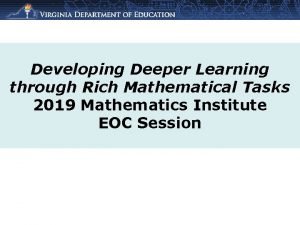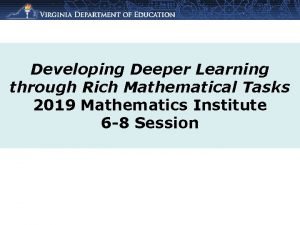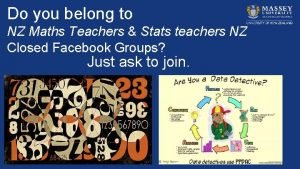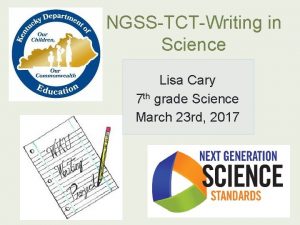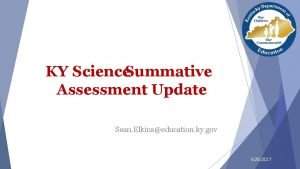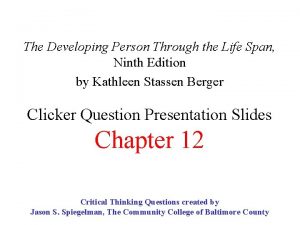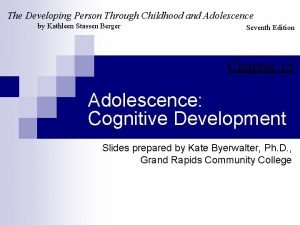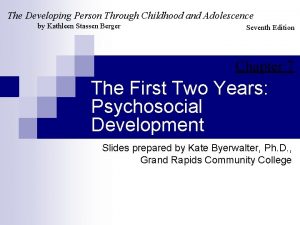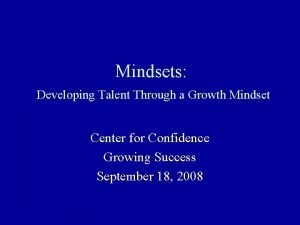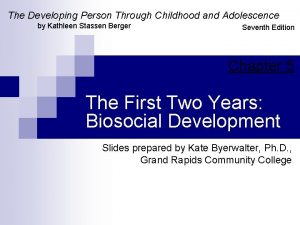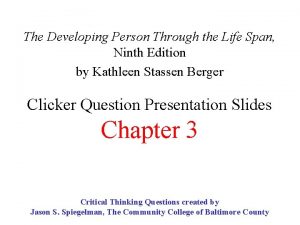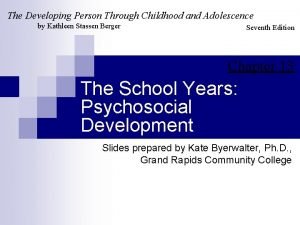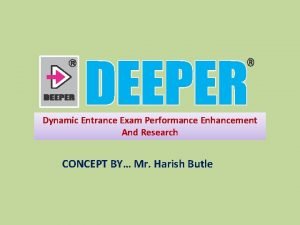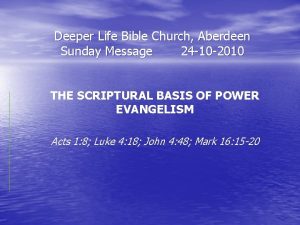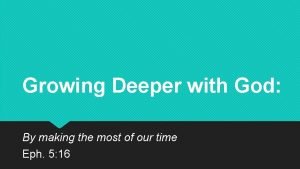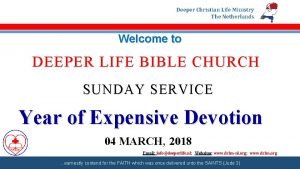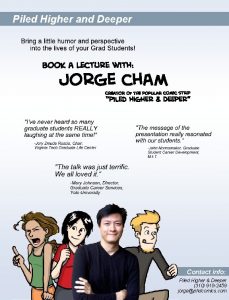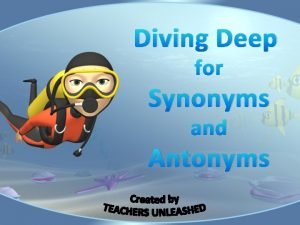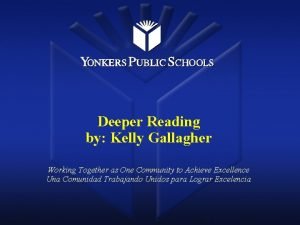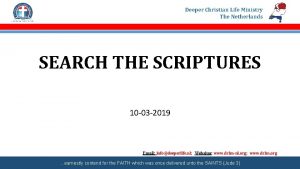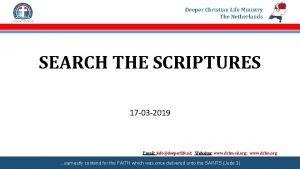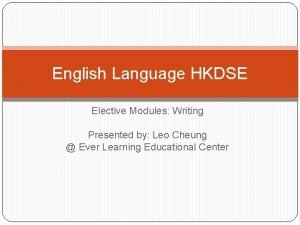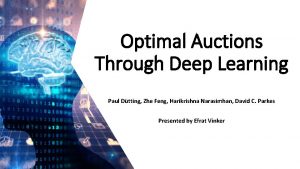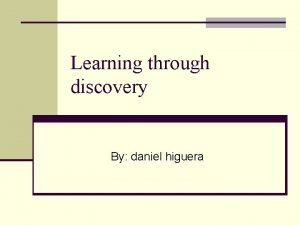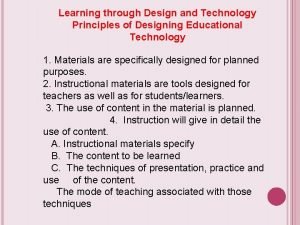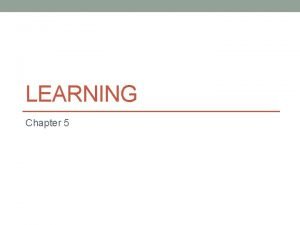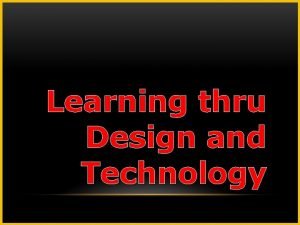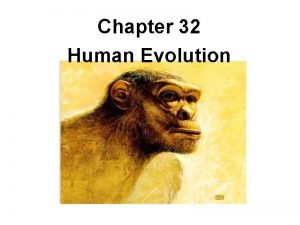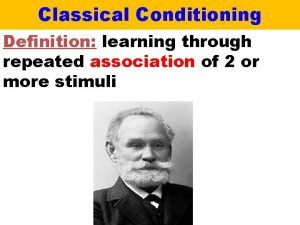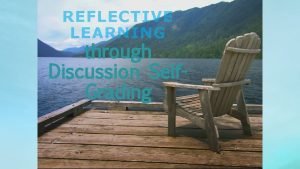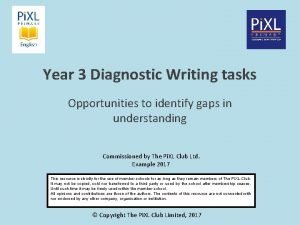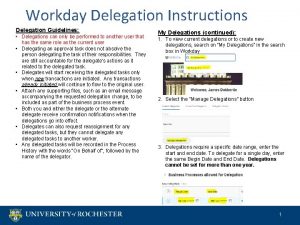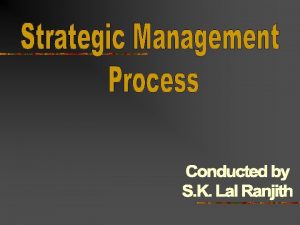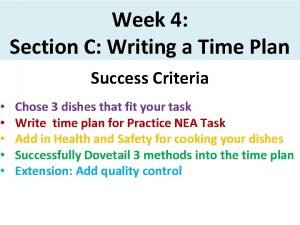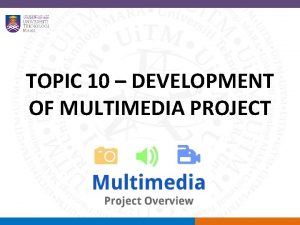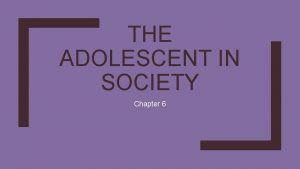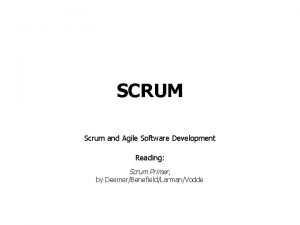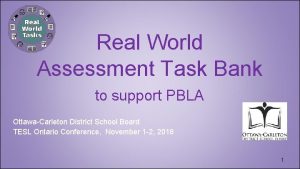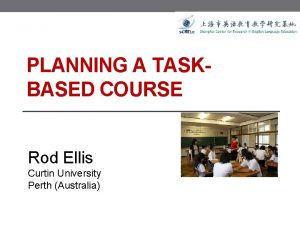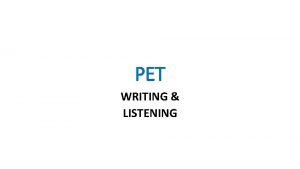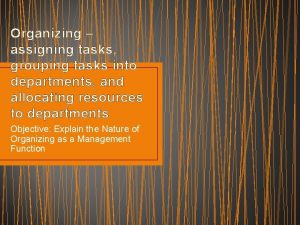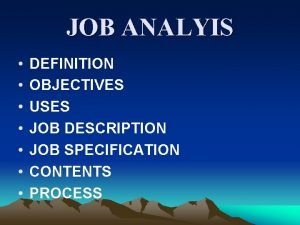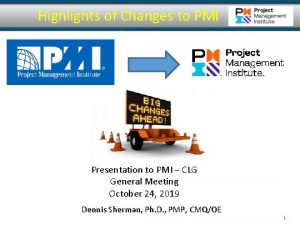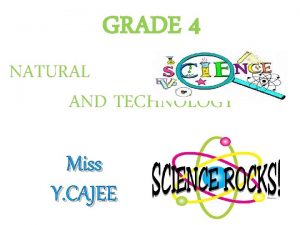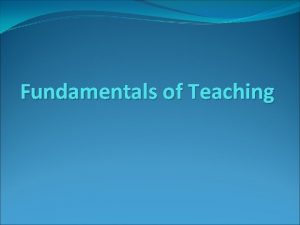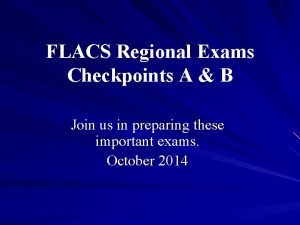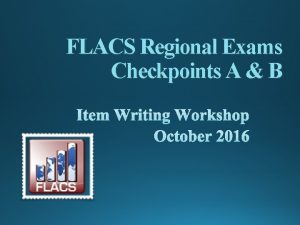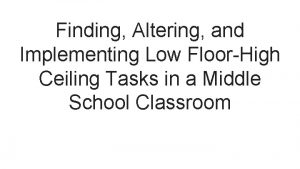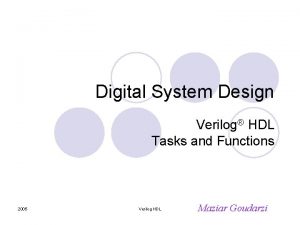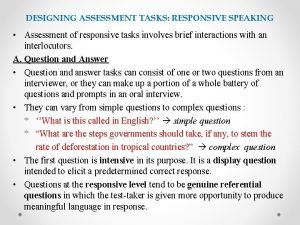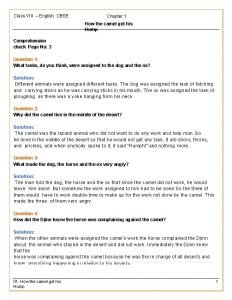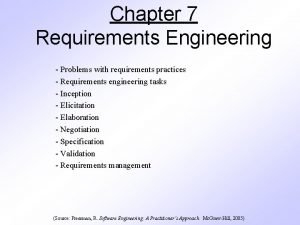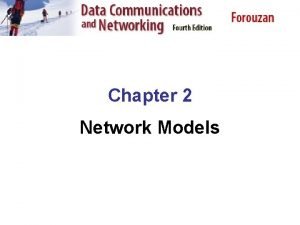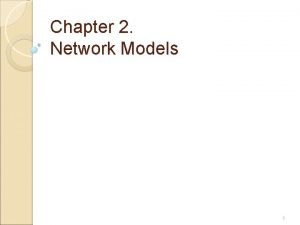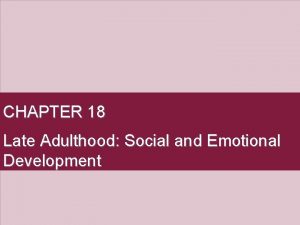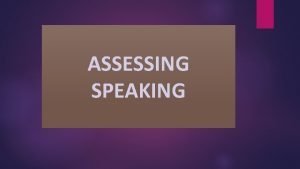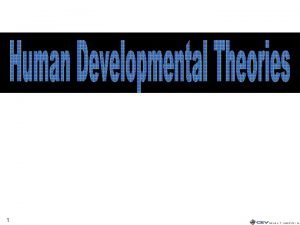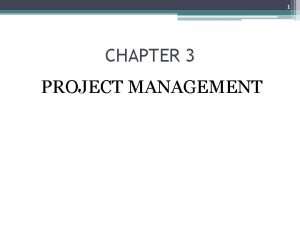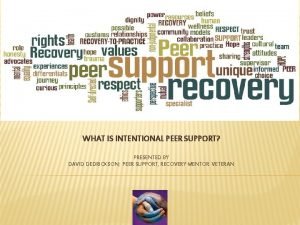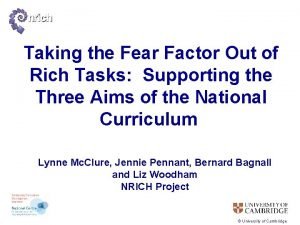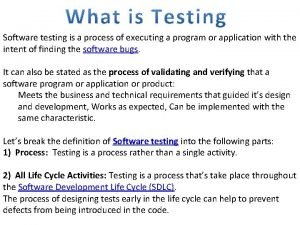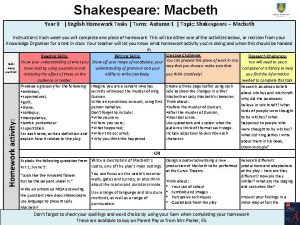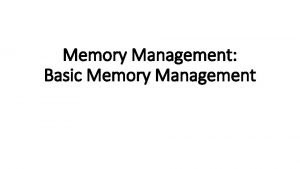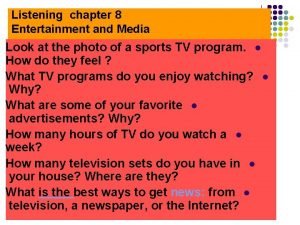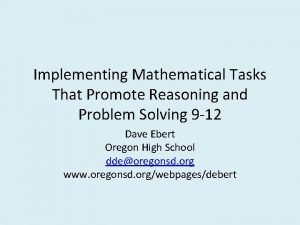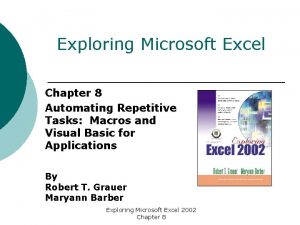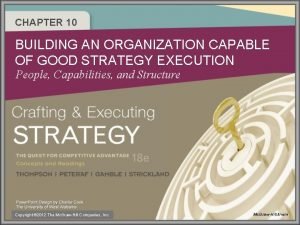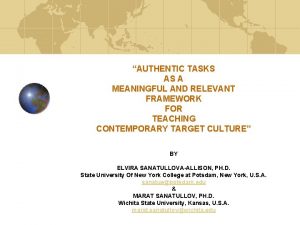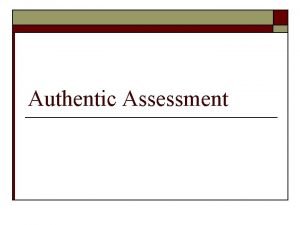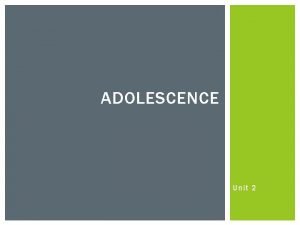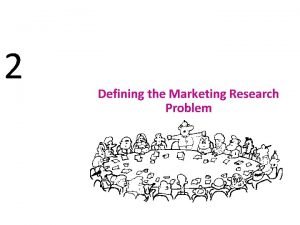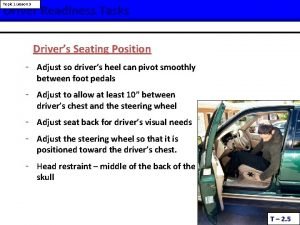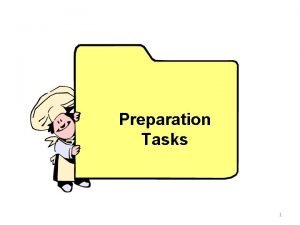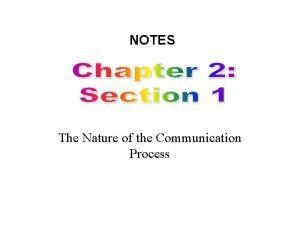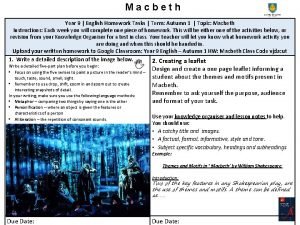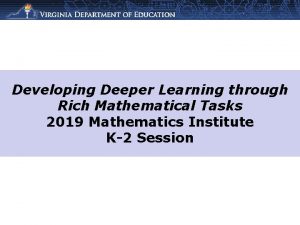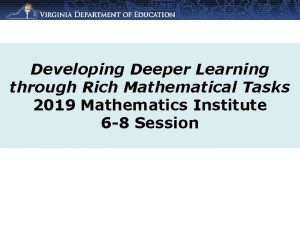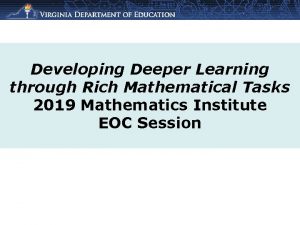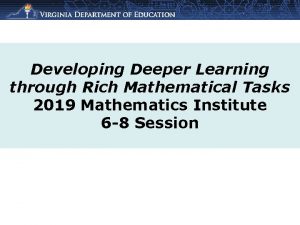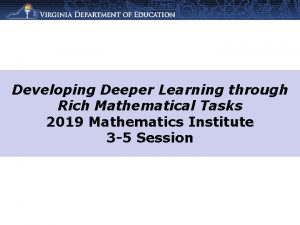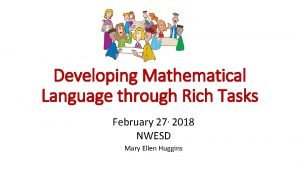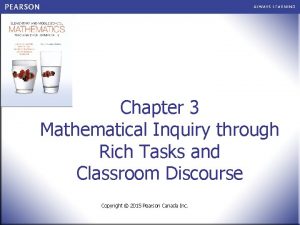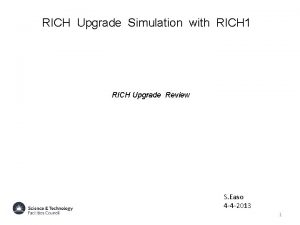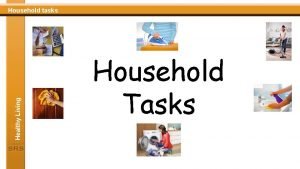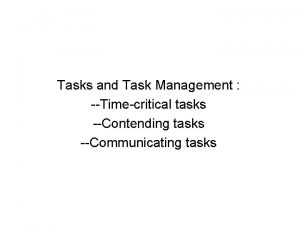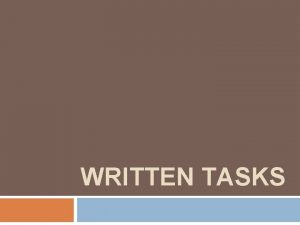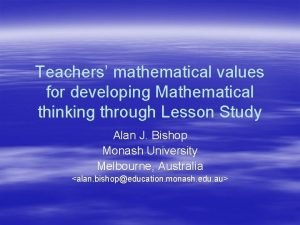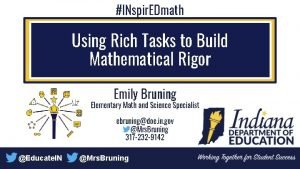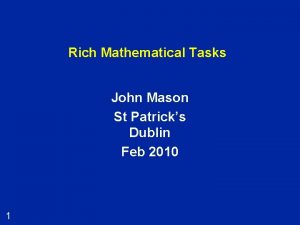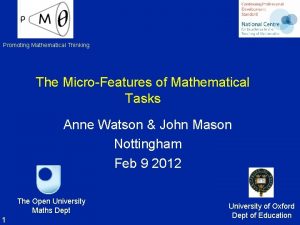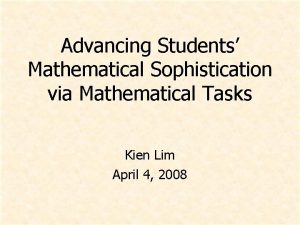Developing Deeper Learning through Rich Mathematical Tasks 2019


























































































































- Slides: 122

Developing Deeper Learning through Rich Mathematical Tasks 2019 Mathematics Institute 6 -8 Session

Welcome and Introductions

Community Builder Stand up if: 3

Just Like Me Stand up if you are a pet owner 4

Just Like Me Stand up if you have used tasks in your classroom 5

Just Like Me Stand up if you drove over an hour to get here today. 6

Just Like Me Stand up if you have scored student work with a rubric before. 7

Just Like Me Stand up if you have been teaching less than five years. 8

Just Like Me Stand up if you have an administrative role. 9

Just Like Me Stand up if you have heard of visible learning. 10

Just Like Me Stand up if you believe you have an impact on student learning. 11

Turn and Talk • How might you use this activity in your classroom to build community? • What is the importance of building a classroom community? • What additional ways do you foster a classroom community? 12

Agenda Morning Session • Module 1: Overview – Visible Learning, Equity, and Identity • Module 2: Task Implementation (Before) LUNCH Afternoon Session • Module 3: Task Implementation (During/After) • Module 4: Assessing Student Understanding • Reflection and Closure 13

Opening Video Message from VDOE 14

Learning Intentions Content: • I am learning about strategies and approaches that make teaching and learning more visible. Language: • I am learning to use the language of a visible learning mathematics classroom. Social: • I am learning how to listen and respond to my colleagues’ ideas in ways that move everyone forward as learners. 15

Module I Overview – Visible Learning, Equity, and Identity

Success Criteria ● I can recognize strategies in teaching and learning that have high impacts (effect size) on student achievement. ● I can recognize and support equitable learning opportunities for all students that promote positive student mathematical identity and agency. ● I can describe how to create a classroom environment that supports the development of assessment-capable mathematics learners. 17

Barometer of Influence and Effect Size Le V ar isib ni le Pa ng B ge o 5 ok Adapted from Hattie, J. (2009) Visible Learning: A Synthesis of Over 800 Meta-analyses Relating to Achievement. New York, NY: Routledge. 18

The Barometer of Influence • Reverse Effects – Have reverse consequences on learning • Developmental Effects – Students could achieve to this level on their own. • Teacher Effects – The effect that “any teacher” can produce • Zone of Desired Effects – Will have greater than average influence on achievement 19

Hinge Point 20

Desmos Barometer Sort • Go to Student. Desmos. com • Enter the code: • Complete the sort • When you are finished – please stand 21

Desmos Barometer Sort Pair Up • Find an eye contact partner • Answer the following prompts: My name is … I am from… My familiarity with Hattie’s research is… My reaction to the sort is… 22

Effect Sizes of NCTM’s Mathematical Teaching Practices 23

Establish mathematics goals to focus learning. 24

Implement tasks that promote reasoning and problem solving. 25

Facilitate meaningful mathematical discourse. 26

Pose Purposeful Questions 27

Support productive struggle in learning mathematics. 28

Elicit and use evidence of student thinking. 29

“We should not hold any influence, instructional strategy, action, or approach to teaching and learning in higher esteem than students’ learning. Using the right approach at the right time increases our impact on student learning in the mathematics classroom. ” -Teaching Mathematics in the Visible Learning Classroom: Grades 6 -8

Math Identity, Agency, and Equity 31

Mathematics Identity Graph See Hand out Draw a timeline of your mathematical experiences indicating 3 -5 distinct high and low points. 32

Vi sib le Le Bo ar – The teacher has the capacity to select and implement Pa ok nin ge g various teaching and learning strategies that enhance 1 their adolescent learners in mathematics. Teacher Mindframes – The decisions the teacher makes about their teaching have an impact on their students’ learning. – Each and every student can learn mathematics and the teacher takes responsibility to teach all learners in their middle school mathematics class. – The teacher must continuously question and monitor the impact of their teaching on student learning. How do the belief statements you wrote in last question from the Math Identity Graph handout connect to these mindframes? 33

Positive Mathematical Identity Empowering students to see themselves as capable of participating in and being doers of mathematics – developed in a classroom where students: • • • Are active participants; Engage in reasoning and sense making; Strive to make their thinking visible and intelligible to others; Use multiple forms of discourse; and Critique their world through using mathematics. Adapted from Catalyzing Change in High School Mathematics – Initiating Critical Conversations. Reston, VA: NCTM, 2018. 34

Supporting Equitable Learning • Mathematical identity – dispositions and deeply held belies that individuals develop about their ability to participate and perform effectively in mathematical contexts and to use mathematics to change the conditions of their lives. (Martin, 2012, p. 57 -58) • Mathematical agency – students capacity and willingness to engage mathematically (Schoenfeld, 2014, p. 407) 35

Identity and Agency 36

A Visible Learning Classroom is. . . Teachers Learners Predict: What do you think visible teaching looks like? What do you think visible learning looks like? 37

Creating Assessment-Capable Visible Learners

Vi sib Assessment-Capable Visible Learner le Le Bo ar Pa ok ni ng ge 10 Adapted from Teaching Mathematics in the Visible Learning Classroom: Grade 6 -8 39

Vi Impact of Visible Teaching sible Le Visible Teaching Visible Learning Bo ar Pa ok ni ng • Clearly communicates So that learners understand the ge intention of the learning 20 experience. the learning intention • Identifies challenging success criteria arr ow So that learners know what success looks like. • Utilizes a range of learning strategies So that learners develop a range of learning strategies. • Continually monitors student learning So that learners know when they are not progressing and can make adjustments. So that learners can seek feedback about their learning. • Provides feedback to learners Source: Teaching Mathematics in the Visible Learning Classroom: 40 https: //us. corwin. com/en-us/sam/teaching-mathematics-in-the-visible-learning-classroom-grades-6 -8

Assessment-Capable Visible Learners ! w o W 41

Mistake-Friendly Classroom Mistakes are not only opportunities for learning, as students consider the mistakes, but also times when our brains grow. Understanding the power of mistakes is critical, as children and adults everywhere often feel terrible when they make a mistake in math. They think it means they are not a math person, because they have been brought up in a performance culture (see Boaler, 2014) in which mistakes are not valued—or worse, they are punished. You cubed 42

Focus of 2018 Mathematics Institutes Adapted from Smith, M. et al. (2017) Taking Action – Implementing Effective Mathematics 43 Teaching Practices Series, National Council of Teachers of Mathematics.

Focus of 2019 Mathematics Institutes Establish mathematics goals to focus learning. Implement tasks that promote reasoning and problem solving. Build procedural fluency from conceptual understanding. Facilitate meaningful mathematical discourse. Pose purposeful questions. Use and connect mathematical representations. Elicit and use evidence of student thinking. Support productive struggle in learning mathematics. Adapted from Smith, M. et al. (2017) Taking Action – Implementing Effective Mathematics Teaching 44 Practices Series, National Council of Teachers of Mathematics.

Reflection on Success Criteria –I can recognize strategies in teaching and learning that have high impacts (effect size) on student achievement. –I can recognize and support equitable learning opportunities for all students that promote positive student mathematical identity and agency. –I can describe how to create a classroom environment that supports the development of assessment-capable mathematics learners. 45

Square, Circle, Triangle Reflection See Refle ctio Shee n t Based on Module I. . . What is one idea that squared with your thinking? What is a question circling in your mind? What point(s) would you like to remember, that might impact your work? 46

Module II Task Implementation (Before)

Success Criteria • I can identify how teacher clarity about learning intentions and success criteria contributes to student success. • I can identify strategies, methods or approaches to meet the learning needs of individual students. • I can distinguish between tasks that will engage students in higher levels of cognitive demand versus lower levels of cognitive demand. • I can describe the factors associated with the decline or maintenance of the cognitive level of a rich mathematical task. • I can anticipate student solution strategies and misconceptions associated with the implementation of a mathematical task. 48

Ingredients for Progress Toward Mastery 49

Clear Learning Intentions Vi s. Rich ib Progress le Toward Mastery Le Pa Bo arn ge ok in “Dividing learning intentions into content, language, and social g 4 7 varieties can provide teachers and students alike a clearer 48 sense of the day’s expectations. ” Clear Learning Intentions Mathematical Tasks -Teaching Mathematics in the Visible Learning Classroom: Grades 6 -8 Content Language Social • What is the math I am supposed to use and learn today? • How should I communicate my mathematical thinking today? • How should I interact with my learning community today? 50

Writing Clear Learning Intentions Rich Mathematical Tasks Progress Toward Mastery SOL 6. 6 b The student will solve practical problems involving operations with integers. Content Language Social • What is the math I am supposed to use and learn today? • How should I communicate my mathematical thinking today? • How should I interact with my learning community today? 51

Writing Clear Learning Intentions Vi sib le Le Pa Bo arn ge ok in SOL 6. 6 b The student will solve practical problems involving g 8 0 operations with integers. 81 Content Clear Learning Intentions Rich Mathematical Tasks Progress Toward Mastery • I am learning to use my understanding of integer addition and subtraction to solve problems about temperature comparisons or changes. Language • I am learning to explain my problem-solving approach verbally and in writing. Social • I am learning to explain my problem-solving thinking clearly to my peers. 52

What Does Success Look Like? Clear Learning Intentions Rich Mathematical Tasks Progress Toward Mastery Success Criteria: • I can find and explain temperature relationships among the cities in the task. • I can compute missing values accurately. • I can explain the process used to figure out missing values. 53

Establish mathematics goals to focus learning. 54

How do tasks and their implementation impact mathematics learning? Student learning is greatest in classrooms where the tasks consistently encourage high‐ level student thinking and reasoning and least in classrooms where the tasks are routinely procedural in nature. (Boaler and Staples 2009; Hieber and Wearne 1993; Stein and Lane 1996) 55

Rich Mathematical Tasks - Definition Rich mathematical tasks engage students in sensemaking through deeper learning that require high levels of thinking, reasoning, and problem solving. 56

Characteristics of Rich Tasks Promote high levels of cognitive demand Allow multiple entry points to students with a wide range of skills and abilities Allow for multiple solution pathways Promote reasoning and sense making Encourage the use of varied representations Require justification or explanation Encourage connections among ideas Are authentic, relevant, or problem-based 57

Implement tasks that promote reasoning and problem solving. 58

Task Launch Source: Adapted from 2015 MARS, Shell Center, University of Nottingham 59

The Task See Cards on Table 1. Place all cards face up on the table. 2. When it is your turn, connect two City Temperature cards using a Changes in Temperature arrow card. • Figure out any missing temperatures. • Explain your calculations verbally to your group. 3. If others in your group disagree, they should explain why. Then as a group, figure out the answer together. 4. When you have reached an agreement, record your strategy on the poster paper and write your solution in the box on the card. Source: Adapted from 2015 MARS, Shell Center, University of Nottingham 60

Stop and Reflect • Why is it important to experience the task prior to implementing in class? • What is the benefit of experiencing the task in a collaborative learning team? • How could this task be scaffolded to support differing student needs? See Refle ction Shee t 61

Scaffolding 62

Effective Task Implementation Jigsaw 1. Complete the sort for your group. 2. Identify key characteristics of the vocabulary assigned to your group. 3. Be prepared to share your findings! See Hand outs Clear Learning Intentions Rich Mathematical Tasks Progress Toward Mastery 63

Jigsaw 64

Surface, Deep, and Transfer Learning in Mathematics Ongoing assessments inform teachers that students are in various places along this path, and sometimes will move interchangeably between these phases of learning. It is the teacher’s goal to provide interventions and strategies students need at the right time for the right reason. Hattie, J. , Fisher, D. , Frey, N. (2017) Visible Learning for Mathematics: What Works Best to Optimize Student Learning. Thousand Oaks, CA: Corwin Website 65

It’s not just about the task…. . Moderate 66

Factors Associated with the Decline and Maintenance of High Level Tasks Decline Maintenance • Problematic aspects of the task become routinized • Emphasis is shifted to correctness or completeness • Not enough time is provided • Classroom management problems prevent engagement • Inappropriate task • Lack of accountability for highlevel products • Scaffolding • Students provided way to monitor their progress • High-level of performance is modeled • Sustained justification, meaning, questioning, comments, and feedback • Tasks build on prior knowledge • Frequent conceptual connections • Sufficient time to explore Resource: Smith, M. et al. (2017) Taking Action – Implementing Effective Mathematics Teaching Practices Series, National Council of Teachers of Mathematics. 67

Vi Checklist for Creating or Selecting sib le Tasks that Promote Mastery Le Pa Boo arn in ge k g 19 7 See Hand out 68

Goldilocks Challenge “… the task is challenging enough to provide a productive struggle for every student in the class. Learners who are still mastering the content may not complete the entire task, but their reasoning and problem-solving skills are challenged by the parts of the task they complete. Learners who are more advanced will progress further into the task and identify some of the more complex missing value calculations. ” -Teaching in the Visible Learning Classroom: Grades 6 -8, pg. 85 69

The “Goldilocks” effect A Visible Learning classroom uses… the right strategy at the right time, for the right level of thinking, with the right level of challenge. 70

Mathematics Assessment Project 71

VDOE Rich Mathematical Tasks 72

See Hand out Anticipating Student Responses “As math students ourselves, we are often trained to become more efficient and begin pruning what feel like unnecessary steps and computational deadweight. The trouble with this path to efficiency is that these trimmings become expert blind spots when we run a classroom of our own. Many of us have lived through educational experiences in which we were taught to seek the right answers as quickly as possible. With a core shift to viewing mathematics as a process rather than a collection of products, it is important for us as educators to investigate our own problem-solving process and regrow any trimmed blind spots. It helps to think about mathematics itself as an explanation, in which each individual step comes with purpose and justifiable legitimacy. ” -Teaching Mathematics in the Visible Learning Classroom: High School 73 Source: Adapted from Teaching Mathematics in the Visible Learning Classroom

Planning for Mathematical Discourse Chart 74

Classifying Questions Assessing Questions Advancing Questions Teacher stays to hear the answer to the question. Teacher walks away, leaving students to figure out how to proceed. ● Are based closely on the work that the student has produced. ● Clarify what the student has done and understands about what s/he has done. ● Gives the teacher information about what the student understands ● Use what students have produced as a basis for making progress toward the target goal of the lesson. ● Move students beyond their current thinking by pressing students to extend what they know to a new situation. ● Press students to think about something they are not currently thinking about. Source: Taking Action: Implementing Effective Mathematics Teaching Practices 75

Pose Purposeful Questions 76

Reflection on Success Criteria • I can identify how teacher clarity about learning intentions and success criteria contributes to student success. • I can identify strategies, methods or approaches to meet the learning needs of individual students. • I can distinguish between tasks that will engage students in higher levels of cognitive demand versus lower levels of cognitive demand. • I can describe the factors associated with the decline or maintenance of the cognitive level of a rich mathematical task. • I can anticipate student solution strategies and misconceptions associated with the implementation of a mathematical task. 77

Stop and Reflect • What was the most important point you would like to hold on to? • What is something you are most excited to share with your colleagues? See Refle ction Shee t 78

Module III Task Implementation (During/After)

Welcome Back! Cut out the cards on your table. In groups, work to find two true equations. Each card may only be used once. One integer card will not be used. Source: https: //www. openmiddle. com/integer-sums-and-differences/ 80

Synectics Rich Tasks are like ______ because _______. 81

Success Criteria ●I can implement a rich mathematical task to support deeper learning for all students. 82

Which One Doesn’t Belong? 83

Learning Intentions & Success Criteria Learning Intention(s): – Content– I am learning about the relationship between area and perimeter of rectangles and the area and circumference of circles. – Language- I am learning how to communicate about the relationships and patterns of area, perimeter, and circumference. – Social – I am learning how to explain my strategy and work to others so I can refine my strategies for problem solving. 84

Learning Intentions & Success Criteria: – I can determine the area and perimeter of rectangles and the area and circumference of circles in a practical problem. – I can justify the relationships between area and perimeter using appropriate math language. – I can make suggestions and utilize suggestions made by my peers to make revisions to my work and thinking. 85

Planning a Dog Park See Hand out Your parents have asked you to design an enclosed area in your backyard for your dog. • The enclosed area can be in the shape of a square or a rectangle. • The area will be enclosed with a fence that cannot be attached to another structure (i. e. , the house, shed, etc. ). • There is 72 yards of fencing available. • The dimensions of your rectangular backyard is 30 yards by 35 yards. What is the largest area in your backyard that can be enclosed for your dog? What are the dimensions of this enclosed area? Justify how you know that your design provides the largest area. Sequel: What is the largest area in your backyard for your dog if the enclosure can be a circle? How does this change your 86 answer?

Debrief • What did you notice the facilitators were doing during the task? • What scaffolds may you provide so that all students can meet success with this task? 87

Scaffolding 88

See Hand out Task Implementation Checklist Adapted from: The 5 Practices in Practice: Successfully Orchestrating Mathematics Discussion in Your Middle School Classroom. 89

Mathematics Process Goals in Action See Hand out Communication Connections Problem Solving Representations Mathematical Understanding Reasoning 90

Reflect on Success Criteria • I can use effective questioning strategies to assess and advance student thinking. 91

Stop and Reflect • What are the benefits of monitoring, selecting, sequencing, and connecting? • How does anticipating help you to monitor, select, sequence, and connect during task implementation? See Refle ction Shee t 92

Module IV Assessing Student Understanding

Success Criteria • I can use success criteria to provide effective feedback to students to deepen student learning. • I can use a rubric to score student work samples and work collaboratively to calibrate my scores. • I can analyze student work to identify what students know and are able to do in order to plan instruction that moves all students forward as learners. 94

Calibration Protocol Purpose Provides a process whereby groups can discuss student work in order to reach consensus about how to score the work based on a rubric or scoring criteria. • Ensures equity in how each scorers contributions are considered • Provides a structure that makes it safe to challenge and question one another • Makes the most of time set aside for examining student work • Increases inter-rater reliability (providing for fair and consistent scoring of student work) 95

Calibration Protocol See Hand out 1. Examination – work through task (individual) 2. Discussion of proficient responses (small group) 3. Read and place in groups (individual) 4. Score student work (individual) 5. Score Sharing (small group) 6. Discussion (small group) 7. Debrief Discussion (small group) 96

Group Roles 1. Identify the following roles within your group: • Recorder • Facilitator • Speaker • Time Keeper

Preparing to Score Student Work 2. Discuss proficient response (group) 10 min. Discuss at your table what is expected for a proficient student response in holistic terms. Use the Rich Mathematical Task Rubric as a guide. Se e Hand out 98

Scoring Student Work See Hand out 3. Read and place in groups (individually) - 10 min Sort student work into 3 piles - low, med, high based on overall impression. 4. Score student work (individually) - 10 min. Score each student work sample. Record your scores on the Individual Scoring Notes sheet. Use evidence from the work and the rubric to support your scores.

Sharing & Discussing Student Work 5. Score sharing without explanation (collaboratively) - 2 min One at a time, team members share their score for each of the rubric criteria while a recorder completes the group’s score sheet. 6. Discussion (collaboratively) - 15 min Score each student work sample. Record your scores on the Individual Scoring Notes sheet. Use evidence from the work and the rubric to support your scores. 7. Debrief (collaboratively) - 5 min 100 Discuss the questions found on the handout.

Think – Pair – Share What are the benefits of the calibration process? 101

Benefits of Calibration • Provides opportunity to deepen educators’ understanding or expectations of student work and the standards of learning • Strengthens educators’ ability to teach and assess in alignment with a rubric • Process provides opportunity to identify areas where rubric could be made clearer or better align to expectations and standards • Calibration can lead to • Greater insight into instructional practices and curriculum • Identification of student strengths and weaknesses at each level of the rubric • Reliable identification of students in need of instructional supports or extensions 102

Elicit and use evidence of student thinking. 103

Elements of Effective Feedback Clear Learning Intentions Rich Mathematical Tasks Progress Toward Mastery Effective Feedback Where am I going? How am I going? Where to next? Each question works at four levels Task Level How well are the tasks understood/ performed? Process Level The main process needed to understand/ perform tasks Source: Hattie & Timperly (2007). Self. Regulation Level Selfmonitoring directing, and regulating of actions Self Level Personal evaluations and affect (usually positive) about the learner 104

Feedback Clear Learning Intentions Rich Mathematical Tasks Progress Toward Mastery As a table pick one student work sample and discuss the following questions: 1. What misconceptions, if any, does the student have? 2. What feedback would you give the student? 3. What are the next instructional steps for the student? 105

Feedback 106

Anchor Paper Scoring and Rationales • Task developers collected comments from scoring sheets to assist in creating final anchor paper rationales • Following scoring calibration, developers deliberately selected 4 -6 student work samples to serve as anchor papers See Hand out 107

Identified Anchor Papers … • Serve as examples of student work at varying levels of performance that, along with rubrics, guide formative and summative assessments • Include a scoring rationale for each criteria explaining why the work is assessed at a specific performance level • Identify where students are in terms of mathematical understanding • Can be examined as a way to understand the learning opportunities we are, and are not, giving our students • Can be used to evaluate how accurately and consistently teachers are assessing students 108

Reflect on Success Criteria • I can use success criteria to provide effective feedback to students to deepen student learning. • I can use a rubric to score student work samples and work collaboratively to calibrate my scores. • I can analyze student work to identify what students know and are able to do in order to plan instruction that moves all students forward as learners. 109

Stop and Reflect • What are the benefits of discussing student work with a collaborative learning team? See Refle ction Shee t 110

Session Closure and Reflection

Potential Website Resources 112

Strategy Catcher Community Builders Strong Classroom Cohesion(0. 44) Math Timeline Positive Self-Concept (0. 41) Jigsaw (1. 20) Questioning (0. 48) Strategy Monitoring (0. 58) Planning and Prediction (0. 76) Checklist Setting Standards for Self Judgement (0. 62) Scaffolding (0. 82) Feedback (0. 70) Cooperative Learning (0. 40) Reflection Evaluation and Reflection (0. 75) Sentence Frames Teaching Communication Skills & Strategies (0. 43) 113

Assessment-Capable Visible Learner Adapted from Teaching Mathematics in the Visible Learning Classroom: Grade 6 -8 114

2016 Mathematics Standards of Learning Instructional Resources • • • Standards of Learning and Curriculum Frameworks Test Blue Prints Practice Items Mathematics Instructional Plans Co-Teaching Mathematics Instructional Plans Algebra Readiness Initiative Materials o Mathematics Vertical Articulation Tool § Static Versions and Dynamic Versions o Remediation Plans o Formative Assessments 2018 Mathematics SOL Institutes Materials Mathematics Vocabulary Word Wall Cards Desmos Resources Rich Mathematical Tasks 115

Desmos Classroom Activities Log (NEW) 116

Teacher Direct Access Teacher. Direct from “Instruction” Link on the left side of the VDOE home page Sign-up Link 117

Math Information Email Teachers, administrators and mathematics coordinators are encouraged to send an email to mathematics@doe. virginia. gov to receive the VDOE Mathematics Update distributed by the mathematics office. 118

Learning Intentions Content: I am learning about strategies and approaches that make teaching and learning more visible. Language: I am learning to use the language of a visible learning mathematics classroom. Social: I am learning how to listen and respond to my peers’ ideas in ways that move everyone forward as learners. 119

Traffic Light Exit Ticket Based on today’s presentation… ● One thing I could stop doing is. . . ● One thing I could continue doing is. . . ● One thing I could start doing is. . . 120

Give yourself “permission to spend more time developing student’s deep understanding of mathematics as a wellrounded discipline. ” -Teaching Mathematics In the Visible Learning Classroom: Grades 6 -8

Please Contact Us The VDOE Mathematics Team at Mathematics@doe. virginia. gov
 Vdoe rich math tasks
Vdoe rich math tasks Vdoe rich mathematical tasks
Vdoe rich mathematical tasks Into the heart of jesus deeper and deeper i go
Into the heart of jesus deeper and deeper i go Cami maths online
Cami maths online Christian deeper learning conference
Christian deeper learning conference Econ213
Econ213 Student work analysis protocol steps
Student work analysis protocol steps Through course tasks
Through course tasks The developing person through the life span 9th edition
The developing person through the life span 9th edition The developing person through childhood and adolescence
The developing person through childhood and adolescence Fast mapping
Fast mapping Developing a global vision through marketing research
Developing a global vision through marketing research The developing person through the life span 9th edition
The developing person through the life span 9th edition The developing person through childhood and adolescence
The developing person through childhood and adolescence Developing talent through a growth mindset
Developing talent through a growth mindset Transient exuberance definition
Transient exuberance definition Breadth and scope of international marketing research
Breadth and scope of international marketing research The developing person through the life span 9th edition
The developing person through the life span 9th edition The developing person through childhood 7th edition
The developing person through childhood 7th edition Global vision marketing definition
Global vision marketing definition Developing a global vision through marketing research
Developing a global vision through marketing research Cuadro comparativo de e-learning b-learning y m-learning
Cuadro comparativo de e-learning b-learning y m-learning Go deeper in christ
Go deeper in christ Deeper life bible church messages
Deeper life bible church messages Deeper life search the scriptures volume 78
Deeper life search the scriptures volume 78 Deeper life bible church netherlands
Deeper life bible church netherlands Deeper life bible church netherlands
Deeper life bible church netherlands Deeper
Deeper Deeper life messages
Deeper life messages Dclm netherlands
Dclm netherlands Deeper life bible church
Deeper life bible church Search the scriptures netherlands
Search the scriptures netherlands Growing deeper in god
Growing deeper in god Deeper life netherlands
Deeper life netherlands Deeper life netherlands
Deeper life netherlands Deeper life search the scriptures volume 78
Deeper life search the scriptures volume 78 Netherlands
Netherlands Deeper life netherlands
Deeper life netherlands Civil war digging deeper webquest answers
Civil war digging deeper webquest answers Deeper life canada
Deeper life canada Your love is deeper than the ocean higher than the heavens
Your love is deeper than the ocean higher than the heavens Deeperph
Deeperph Deep dive synonym
Deep dive synonym Kelly services netherlands
Kelly services netherlands Deeper life netherlands
Deeper life netherlands Deeper life netherlands
Deeper life netherlands Deeper life netherlands
Deeper life netherlands Deeper life netherlands
Deeper life netherlands Deeper life bible church netherlands search the scriptures
Deeper life bible church netherlands search the scriptures Deeper life bible church netherlands search the scriptures
Deeper life bible church netherlands search the scriptures Deeper life netherlands
Deeper life netherlands Through one man
Through one man Through and through furcation
Through and through furcation Disadvantages of timber conversion
Disadvantages of timber conversion I remember the night my mother
I remember the night my mother Learning english through workplace communication
Learning english through workplace communication Dtting
Dtting Learning through discovery
Learning through discovery Learning through design and technology
Learning through design and technology Difference between positive and negative reinforcement
Difference between positive and negative reinforcement It is a lifelong process of social interaction.
It is a lifelong process of social interaction. Principles of educational technology
Principles of educational technology Learning english through cartoons
Learning english through cartoons Fossil diversity
Fossil diversity Learning through association
Learning through association Learning through discussion
Learning through discussion Machinarium playtime
Machinarium playtime How to delegate tasks in workday
How to delegate tasks in workday Five tasks of strategic management
Five tasks of strategic management Dovetail timeplan
Dovetail timeplan Basic stages of multimedia project development
Basic stages of multimedia project development Importance of adolescence
Importance of adolescence Task conditions and standards examples
Task conditions and standards examples Choose one of the tasks
Choose one of the tasks Sprint tasks example
Sprint tasks example Real world task
Real world task Unfocused task example
Unfocused task example Pet writing tasks
Pet writing tasks Ma-pal
Ma-pal Psychosocial tasks
Psychosocial tasks Grouping task into department job specification
Grouping task into department job specification Job analyis
Job analyis Pmp tasks
Pmp tasks Nst grade 5 term 2 practical
Nst grade 5 term 2 practical Central task
Central task Flacs exam
Flacs exam Flacs checkpoint b spanish exam june 2016 answers
Flacs checkpoint b spanish exam june 2016 answers Low floor high ceiling math tasks
Low floor high ceiling math tasks Exploritory robots
Exploritory robots Chastity tasks
Chastity tasks Verilog system tasks
Verilog system tasks Responsive speaking meaning
Responsive speaking meaning Ken hardy tasks of the privileged
Ken hardy tasks of the privileged Describe how dog horse and ox turned against the man
Describe how dog horse and ox turned against the man Inception elicitation elaboration negotiation
Inception elicitation elaboration negotiation Layered tasks
Layered tasks Layered tasks
Layered tasks Layered tasks
Layered tasks Robert peck's developmental tasks
Robert peck's developmental tasks Examples of intensive speaking
Examples of intensive speaking Developmental tasks for adolescent
Developmental tasks for adolescent Channel management tasks
Channel management tasks Havighurst's developmental tasks
Havighurst's developmental tasks Project managers typically perform the tasks of
Project managers typically perform the tasks of 4 tasks of intentional peer support
4 tasks of intentional peer support What tasks can a tilting skillet be used for
What tasks can a tilting skillet be used for Nrich maths
Nrich maths Test planning has which of the following major tasks
Test planning has which of the following major tasks Macbeth homework tasks
Macbeth homework tasks Orchestration is about codifying tasks
Orchestration is about codifying tasks Multiprogramming with a fixed number of tasks
Multiprogramming with a fixed number of tasks Listening about entertainment
Listening about entertainment Implement tasks that promote reasoning and problem solving
Implement tasks that promote reasoning and problem solving How to automate repetitive tasks in excel
How to automate repetitive tasks in excel Building an organization capable of good strategy execution
Building an organization capable of good strategy execution Types of authentic tasks
Types of authentic tasks Authentic evaluation meaning
Authentic evaluation meaning Adolescence
Adolescence Marketing research problem definition
Marketing research problem definition Driver readiness
Driver readiness Preparation tasks
Preparation tasks Communication is unavoidable
Communication is unavoidable Macbeth homework booklet
Macbeth homework booklet
